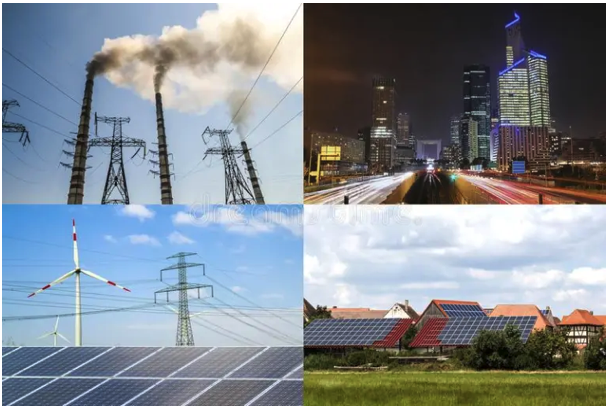How Cleaning Up a Nation’s Energy Mix Could Lead to Cleaning Up at the World Cup
This week marks the official start of the 2018 World Cup, the sporting event that every four years captivates the world’s attention better than any other. In addition to the traditions of players exchanging jerseys and fans shouting out organized chants, a recurring theme in recent World Cups has been the media frenzy over ordinary animals defying the odds and correctly predicting the outcomes of the games– from 2010’s Paul the Octopus to this year’s deaf and clairvoyant Russian cat, people love watching these unconventional but surprisingly accurate ways of predicting the World Cup. Obviously these animals don’t have any real premonitions, but what if we could use energy data– specifically related to carbon dioxide (CO2) emissions from the energy sector– to create a bit of an algorithm to determine which teams have the best odds? Such an attempt may not be any more concrete than a pygmy hippopotamus choosing between food bowls with the Russian and Saudi Arabian flags, but could there perhaps be some sort of real-world correlation?
Well, there’s one way to find out!
The data
The Shift Project, a data portal that provides access to a wide range of global energy information, has a publicly available dataset of energy-related CO2 emissions per capita of each country from 1980 to 2014, which will be used as the basis of this analysis.
By analyzing the annual CO2 emissions per capita of the countries that came in first, second, and third place for each of the last 10 World Cups (as far back as the CO2 data goes), a trend appears regarding the year-over-year change in CO2 emissions per capita heading into the year of the World Cup:
This graph shows us the following:
For teams that make the championship game, i.e., teams that finish in first or second place, the nation’s energy-related CO2 emissions per capita decreased from the year before the World Cup 72% of the time (when decreasing, these countries decreased an average of 3%).
And lest you think that’s just a factor of all countries becoming aware of climate change and adjusting their energy sector accordingly, the team that finished in third place had their energy-related CO2 emissions per capita increase from the year before the World Cup 67% of the time, with the average increase being 4%.
As an aside, another interesting tidbit from looking at these energy-sector CO2 emissions per capita– eight out of the past nine countries to host the World Cup experienced a year-over-year increase in CO2 emissions per capita that year. WIth all the energy required to host the world’s biggest sporting event, an increase in emissions in the cities is to be expected– but it’s surprising to see the needle moved enough to show up on the countries’ total. So despite Russia’s recent improvements in energy-related CO2 emissions per capita, I would bet we’ll see an increase in emissions for 2018.
What does this all mean?
Admittedly, statistics like this might up just being noise that gets smoothed out the longer you watch, but could there be something causing this correlation that separates a championship pedigree team from ones unable to make the final push? Any team that even qualifies for the World Cup is obviously one filled with players who have been training and excelling at the beautiful game for their entire lives, and one year of change in the energy sector wouldn’t make that much of a difference. But perhaps living in an area where the air has recently gotten measurably cleaner over the past year aids players in their conditioning and training push leading up to the big game, giving them an ever-so-slight edge over teams living in an area where air pollution is increasing.
Source: Reuters
Or perhaps there is a correlation, but not causation, tying World Cup performance to policies meant to restrict CO2 emissions. For example, Europe is known as both a hotbed for soccer— sorry, I mean football– talent, and the continent also happens to be the center for progressive energy policies. So those two unrelated traits of European nations could be enough to tilt the scales and cause this correlation.
Using this intel to predict World Cup winner
For this method to be worthwhile, we need to be able to use it to outperform the psychic animals who are also picking the winners. Unfortunately, because this retrospective methodology relies on end-of-the-year data, we do not yet know which countries will find their energy-related CO2 emissions per capita rising or falling compared with last year. However, we can take clues from the several ways nations are able to address the CO2 emissions of their energy sector.
Closures of heavy CO2-emitting plants, namely coal-fired plants, is one definitive way to decrease overall CO2 emissions.
Similarly, the opening of carbon-neutral plants, whether renewable or nuclear, will decrease energy sector CO2 emissions.
Lastly, implementing technology to improve the efficiency of operation or to capture CO2 emissions before they are emitted to the atmosphere is an important strategy for addressing climate change in traditionally carbon-intensive plants, while also allowing the continued use of these plants that some nations depend upon for reliable electricity generation. The most prominent of these technological strategies is carbon capture and storage (CCS).
Based on these strategies, which countries in the 2018 World Cup field are most likely to undergo a year-over-year decrease on energy-related CO2 emissions per capita?
Australia retired 1,840 megawatts (MW) of coal-fired capacity in 2017, while also planning the deployment of a large-scale CCS retrofit for an existing coal plant. Further, Australia’s renewable energy sector is growing and is expected to make up 13% of electricity generation by 2022.
Denmark is head and shoulders above the rest of the world when it comes to ongoing renewable energy growth, expected to account for nearly 70% of the country’s power supply by 2022.
Germany is another nation where coal-fired plants are closing at a rapid pace, with 2,920 MW of coal capacity closed in 2017 while renewable energy is also on the rise.
Russia, the 2018 World Cup host country, is adding 2,270 MW of nuclear power in 2018, which would allow for decreased reliance on coal and its CO2 emissions.
On the other side of the coin, which countries can we expect to see an increase in energy-related CO2 emissions?
Japan’s energy sector added 500 MW of new coal-fired plants in 2017 and the nation, which needs to import 90% of its energy, is continually hesitant to embrace nuclear energy after the 2011 Fukushima accident.
Poland closed 600 MW of coal-fired plants in 2017, but 1,075 MW of new coal-fired capacity came on board with more under construction today. Poland relies on coal instead of the cleaner-burning natural gas because coal is seen as the patriotic alternative to Russian gas.
South Korea made positive steps with 525 MW of coal closures and 2,800 MW of new nuclear, but that is outweighed by the 5,262 MW of new coal-fired plants opened in 2017.
Side note– maybe the United States is lucky to have not qualified for the World Cup after all, lest the order from the Trump administration to boost coal plants prevent the United States from reducing emissions and thus harming the American team’s odds to make the championship game anyway!
Source: dreamstime
So with all that said, this analyst’s assessment is that World Cup powerhouse Germany seems the most well-positioned to claim another World Cup title with so much coal capacity being replaced with renewables. However, that’s in no way a bold prediction, as oddsmakers have Germany as the second likeliest team to win it all. But if you want a hot take based on this CO2 analysis– then don’t sleep on Denmark, Australia, or Russia to make a Cinderella run to the championship game.
Final prediction: Germany over Denmark in the final!
You heard it here first! Do you agree? Or is this poppycock? Let me know in the comments and on Twitter.




